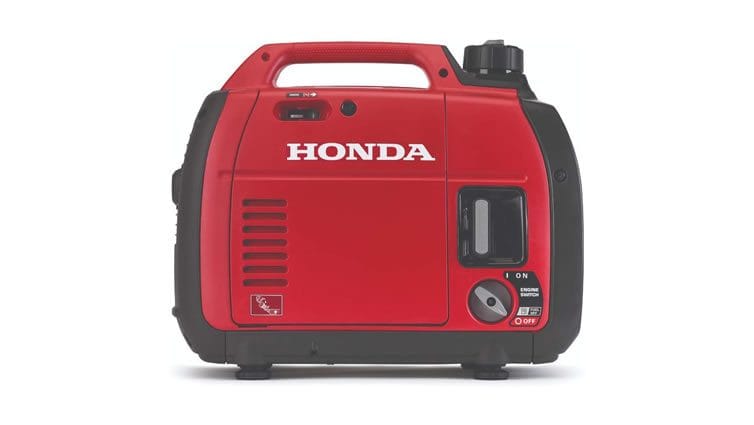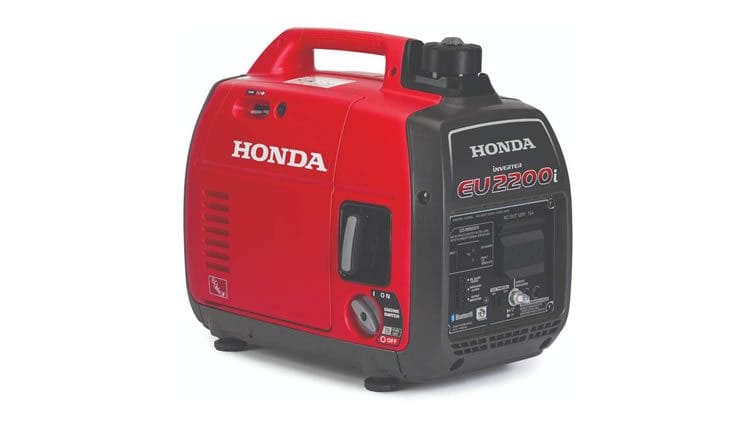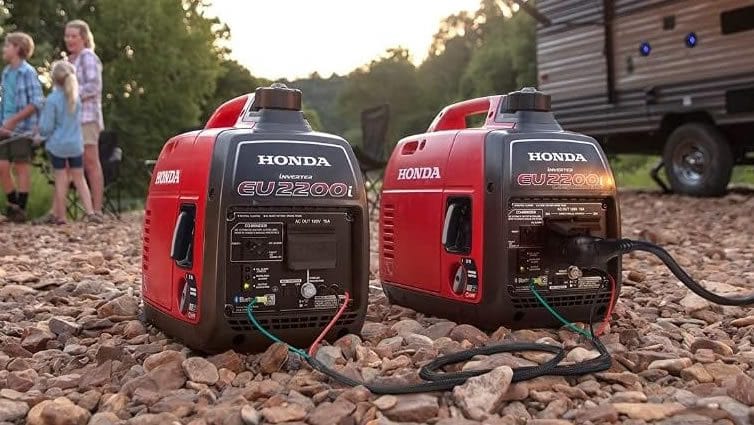Honda Generator 2000 Introduction
The Honda Generator 2000 is a reliable and compact solution for anyone in need of portable power. Whether you’re camping in the great outdoors, tailgating at your favorite sporting event, or facing a power outage at home, this generator delivers the perfect combination of power, efficiency, and portability. Known for its quiet operation and fuel efficiency, the Honda Generator 2000 has become a favorite choice for outdoor enthusiasts and homeowners alike.
With its easy-to-use features and impressive performance, the Honda Generator 2000 stands out as an ideal solution for those looking to power small appliances or charge devices on the go. This generator is designed to provide the right amount of power without the noise and fuel waste typically associated with larger models. Whether you’re a first-time user or a seasoned pro, the Honda Generator 2000 offers a reliable, user-friendly experience that won’t disappoint.
Proper Generator Sizing: How to Choose the Right Power for Your Needs
When selecting the perfect generator, proper sizing is critical. The Honda Generator 2000 offers a great balance of portability, efficiency, and power, but choosing the right generator size is essential for ensuring optimal performance. Sizing your generator correctly helps you avoid both overloading and underusing your generator, ensuring it works effectively when you need it most. In this section, we’ll discuss how to size a generator for your needs and the factors to consider before purchasing.
Regular Maintenance for Efficiency: Keep Your Honda Generator 2000 Running Smoothly
Owning a Honda Generator 2000 is a fantastic way to ensure you have reliable power whenever you need it. Whether you’re using it for outdoor activities, a backup power source, or during emergencies, regular maintenance is key to ensuring that your generator continues to operate efficiently. Proper upkeep not only extends the lifespan of your Honda generator 2000, but it also ensures peak performance and fuel efficiency. Let’s dive into the simple steps you can take to maintain your generator for optimal operation.
Keep the Air Filter Clean
One of the most important maintenance tasks for your Honda Generator 2000 is to keep the air filter clean. The air filter plays a critical role in ensuring that your generator runs smoothly by keeping dirt and debris out of the engine. A clogged or dirty air filter can cause the generator to struggle, leading to decreased performance, higher fuel consumption, and even engine damage.
To maintain your Honda Generator 2000, it’s essential to inspect and clean the air filter every 50 hours of use or once a season, whichever comes first. If the filter is damaged or excessively dirty, replacing it is a simple task that can be done at home. Simply remove the filter from the compartment, clean it with air pressure or a soft brush, and if necessary, replace it with a new one. Keeping the air filter clean will allow your Honda Generator 2000 to run more efficiently and with less strain on the engine.
Change the Oil Regularly
Just like any other small engine, regular oil changes are necessary to maintain the Honda Generator 2000 in good working order. Over time, engine oil breaks down and can become contaminated with dirt, debris, and other particles, reducing the engine’s ability to perform at its best. If you neglect changing the oil, you risk shortening the lifespan of the engine and reducing overall performance.
For optimal efficiency, it’s important to change the oil in your Honda Generator 2000 after the first 20 hours of use, and then every 100 hours of operation or once a year, whichever comes first. It’s an easy and inexpensive maintenance task that can help keep the engine running smoothly. Make sure to use the correct type and amount of oil as recommended in the owner’s manual. Don’t forget to dispose of the used oil responsibly.
Inspect and Clean the Spark Plug
The spark plug is a crucial component of your Honda Generator 2000, as it is responsible for igniting the fuel in the engine. Over time, spark plugs can become dirty or worn, leading to poor performance, difficulty starting, or even complete failure. Regular inspection and cleaning of the spark plug can help prevent these issues and ensure reliable starting and smooth operation.
Inspect the spark plug every 100 hours of use or at least once a year. Look for signs of wear, such as corrosion, carbon buildup, or damage to the electrodes. If the spark plug looks dirty, use a wire brush or a spark plug cleaner to remove any debris. If it’s heavily worn, it’s best to replace the spark plug. Installing a new spark plug can improve fuel efficiency and ensure that your Honda Generator 2000 starts easily when you need it.
Maintain Proper Fuel Levels
Proper fuel management is another key aspect of maintaining your Honda Generator 2000. Using fresh, clean fuel and maintaining the proper fuel levels helps prevent engine damage and ensures that your generator runs at its best. Over time, fuel can break down and become stale, which can cause the engine to misfire or run poorly. Additionally, leaving fuel in the generator for long periods can result in clogged fuel lines or carburetor issues.
To prevent these problems, always use fresh gasoline and consider adding a fuel stabilizer if you plan to store the generator for extended periods. When you’re finished using the generator, drain any remaining fuel to avoid stagnation and buildup in the tank. Regularly check fuel levels and clean the fuel tank if necessary. A well-maintained fuel system is essential for ensuring that your Honda Generator 2000 operates efficiently and reliably when you need it most.
Clean the Exterior and Keep it Covered
It’s not just the internal components of your Honda Generator 2000 that need attention; the exterior also plays a role in its longevity. Dirt, dust, and grime can accumulate on the outer surfaces, leading to blocked air vents, which can cause the engine to overheat. Regularly wiping down the exterior and ensuring that the generator’s vents and openings are free from debris helps maintain proper airflow and cooling.
If you’re storing your Honda Generator 2000 for the off-season or during periods of non-use, it’s a good idea to cover it with a protective cover. This will help prevent dust, dirt, and moisture from accumulating, which can cause rust and other forms of damage. Storing the generator in a dry, cool place will also protect it from environmental factors that could affect its performance.
Regular maintenance is a small effort that goes a long way in ensuring your Honda Generator 2000 continues to run efficiently for years to come. By keeping the air filter clean, changing the oil, inspecting the spark plug, managing fuel properly, and cleaning the exterior, you’re ensuring that your generator operates smoothly and reliably whenever you need it. These simple maintenance steps will keep your Honda Generator 2000 performing at its peak, saving you time, money, and potential headaches in the long run.
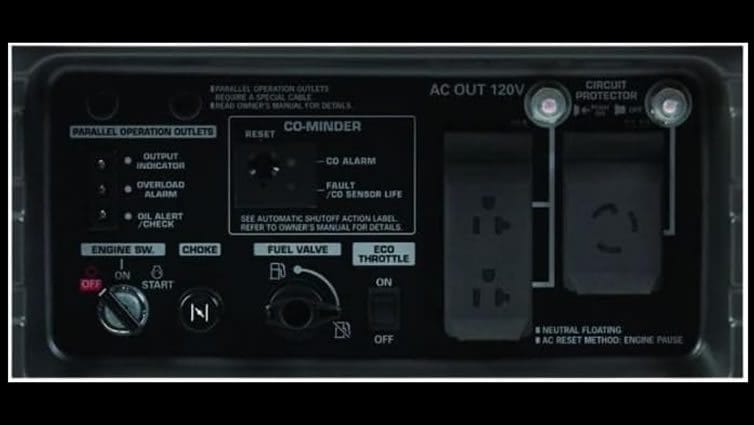
Avoiding Frequent Starts and Stops: Tips for a Long-Lasting Honda Generator 2000
When it comes to your Honda generator 2000, the way you operate it can have a huge impact on its longevity. While it’s tempting to start and stop the generator frequently for short bursts of power, this kind of use can put unnecessary strain on the engine. Frequent starts and stops might seem harmless, but they can actually lead to a host of problems that could shorten the lifespan of your Honda generator 2000 and cause it to run less efficiently. Let’s take a closer look at why avoiding this habit is so important.
The Impact of Frequent Starts and Stops
Every time you start your Honda generator 2000, the engine undergoes a series of processes designed to get it up and running. When you start and stop the generator too often, it can stress the engine, increasing wear and tear. This strain affects critical components, like the starter motor and the fuel system, which may eventually lead to costly repairs. Frequent starts and stops also cause the engine to burn more fuel and produce more exhaust, leading to inefficiency.
Another issue is that engines, including the Honda generator 2000, need time to warm up properly. Starting and stopping it repeatedly without giving it a chance to run for a while might prevent the engine from reaching its optimal operating temperature. This could result in incomplete combustion and even carbon buildup over time, causing the engine to run less smoothly.
Run Your Generator for Longer Periods
To maintain the best performance from your Honda generator 2000, it’s generally recommended to let it run for longer intervals. Ideally, aim to run it for a minimum of 30 minutes to an hour at a time. This will allow the engine to reach its optimal operating temperature, ensuring that it operates more efficiently and reduces the risk of buildup within the engine. This also gives the alternator time to recharge the battery, which helps ensure that your generator is ready for the next time you need it.
Longer running times also help stabilize the fuel system. Starting and stopping your Honda generator 2000 without a good warm-up can disrupt the flow of fuel, leading to clogged fuel lines or a flooded carburetor. Running the generator continuously for a while allows the fuel to burn more cleanly and prevents these types of issues from arising.
When Frequent Stops Might Be Necessary
While it’s always best to avoid frequent starts and stops, there are still occasions when it’s necessary to turn the Honda generator 2000 off temporarily. If you’re moving to a new location or temporarily shutting down the generator for a break, make sure you give the generator time to cool down before restarting it. Allowing the engine to cool properly after it’s been running for a while can help prevent unnecessary strain when you start it up again. Additionally, always ensure the generator is in a well-ventilated area to avoid overheating.
If you’re only using the Honda generator 2000 for brief periods, consider whether there might be a more suitable power solution. For example, if you only need to charge a phone or power small devices, a smaller, more portable power bank might be a better choice. Using the generator in the most efficient way possible will help prevent unnecessary wear and tear, saving you both time and money on repairs.
Best Practices for Extended Use
When you need your Honda generator 2000 to run for an extended period, make sure it’s properly maintained. Before starting it up, check the oil levels, inspect the air filter, and ensure the fuel tank is full. Also, make sure the generator is placed on a flat, stable surface where it can operate safely. Running the generator on uneven ground can lead to oil spillage, which could cause engine damage.
Once it’s up and running, monitor the load you’re placing on the generator. While the Honda generator 2000 is capable of handling moderate loads, overloading it can cause it to strain and may lead to overheating. Ensure you’re within the recommended capacity to avoid damaging the engine or its internal components. If you need to power several appliances, consider spreading the load out evenly across the generator’s outlets.
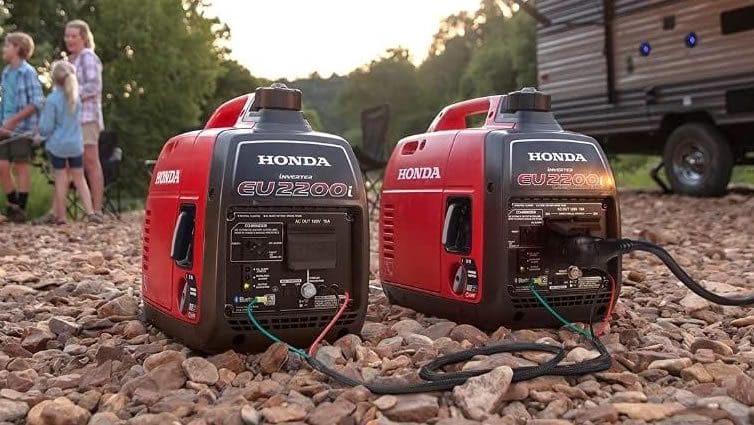
The Bottom Line: Balance Is Key
While starting and stopping your Honda generator 2000 might seem like the easiest way to manage its power, it’s important to recognize that this practice can cause long-term damage. By running the generator for extended periods and allowing it time to cool down between uses, you’ll help ensure it operates more efficiently and lasts longer. Additionally, regularly maintaining the generator, monitoring its load, and following safety guidelines will keep your generator running at its best. Keep these simple tips in mind, and your Honda generator 2000 will continue to serve you for many years to come.

